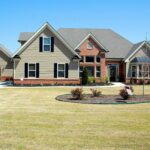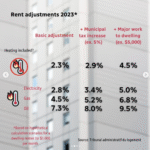Mixed-use residential buildings are becoming increasingly popular in urban environments as a response to the growing demand for diverse and sustainable living spaces as well as solving the issue of rapidly changing demand for expensive/large office spaces. These structures combine residential units with commercial, retail, or office spaces in the same building. The idea is to create a more dynamic and integrated community, allowing residents to live, work, and access amenities all within the same spaces.
The positive side:
Convenience and Accessibility:
One of the most significant advantages of mixed-use residential buildings is the convenience they offer to residents. Imagine living in a building where you can have your own private space, go to the gym, do the groceries and even hit up the office twice a week without ever having to leave your building! This type of building definitely encourages a more pedestrian-friendly lifestyle that removes travel time and brings more people back to city centres.
Vibrant and Active Communities:
Mixed-use developments make way for vibrant communities by creating a diverse mix of people living and working in the same area. This dynamic environment fosters social interactions and a sense of belonging, resulting in stronger community bonds within each building. The presence of commercial spaces can also attract visitors from other parts of the city, making the neighborhood lively and stronger economically.
Economic Viability:
From a developer’s perspective, mixed-use projects can be more financially sustainable compared to single-use buildings. By maximizing the use of space, developers can generate income from both residential sales and commercial tenants, reducing the risk of vacancies and increasing overall revenue of the project.
The Negative Side:
Noise and Disruptions:
Mixed-use buildings can be noisy and bustling, especially if the commercial spaces host late-night activities or involve frequent deliveries. A big take away from this idea is that not everyone will want to live in a building that has so much foot traffic on a daily basis. Imagine living in a building with two stories of commercial use, four of office space and another 12 occupied by residents!! This would create traffic in the garage, at the elevators and elevated noise levels throughout the week that may create an unpleasant living space for some.
Zoning and Regulatory Challenges:
Developing mixed-use projects can be more complex and time-consuming due to zoning regulations and permits required for both residential and commercial use. Local authorities might have stringent requirements regarding the mix of uses and the design of the building, which can add to development costs and make it harder to realize the overall goal of building this type of unit. How can they guarantee noise control, tenant quality and strong ownership. Another question is what type of Declaration of Co-Ownership this type of building would need, with so many different owners and fractions.
Privacy and Security:
With a mix of residential and commercial tenants, maintaining security can be a challenge. Developers and property managers will need to provide a way to keep everyone where they belong and this can become extremely challenging. It can also in turn make co-ownership fee’s very expensive as paying for security is not cheap!






